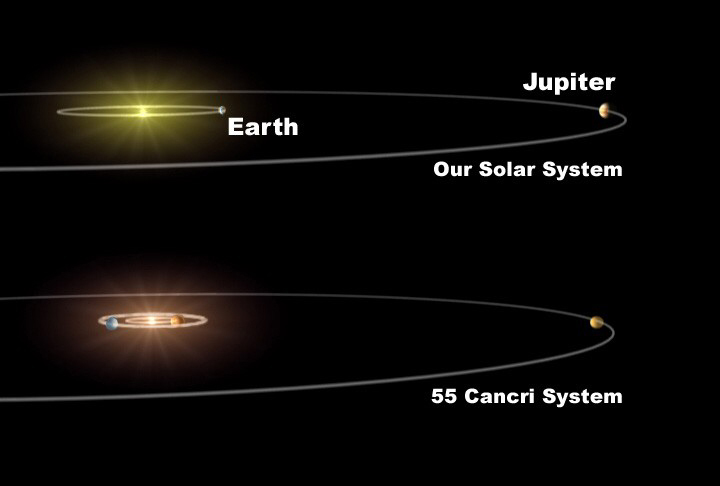 Nearly 40 light years away, a cosmic stone throw, there exists an interesting star system. 55 Cancri is a star system much like our own: it has planets in the "habitable" zone.
Nearly 40 light years away, a cosmic stone throw, there exists an interesting star system. 55 Cancri is a star system much like our own: it has planets in the "habitable" zone.
The binary star is less luminous as our own and evolutionary models place it at approximates 5,500 million years old. It has a magnitude of 5.95, and is visible through binoculars or even through the naked eye under very dark skies. A telescope even reveals its red dwarf companion.
 There are currently four confirmed planets in the star system. Three have masses similar to that of Jupiter, and the innermost, "habitable" zone, planet has a mass comparable to Neptune.
There are currently four confirmed planets in the star system. Three have masses similar to that of Jupiter, and the innermost, "habitable" zone, planet has a mass comparable to Neptune.Large spaces between confirmed planets b and c indicate that there is a high likelihood of smaller terrestrial planets in between.
The idea of a star system close in form and structure to our own is intriguing. Imagine that the innermost planet has life on it. The temperature should be correct for our definition of what life can tolerate. What would beings on this planet look like? The gravitational pull is much greater on a larger planet; would that make lifeforms larger and denser? If there wasn't an Earth-like environment, would an entirely different set of chemical and metabolic reactions cause life to evolve in a very different way, like breathing helium or drinking sulfuric acid? The possibilities are endless, but one thing is certain (we think): you need planets to have life, and this system bears a striking resemblance to our own.




|